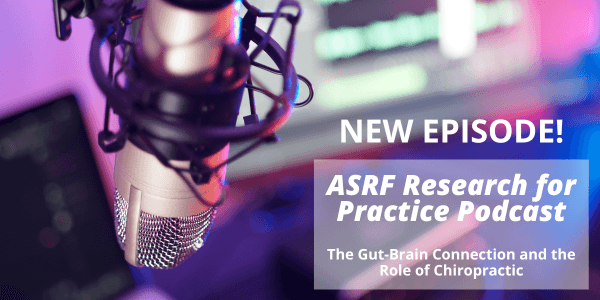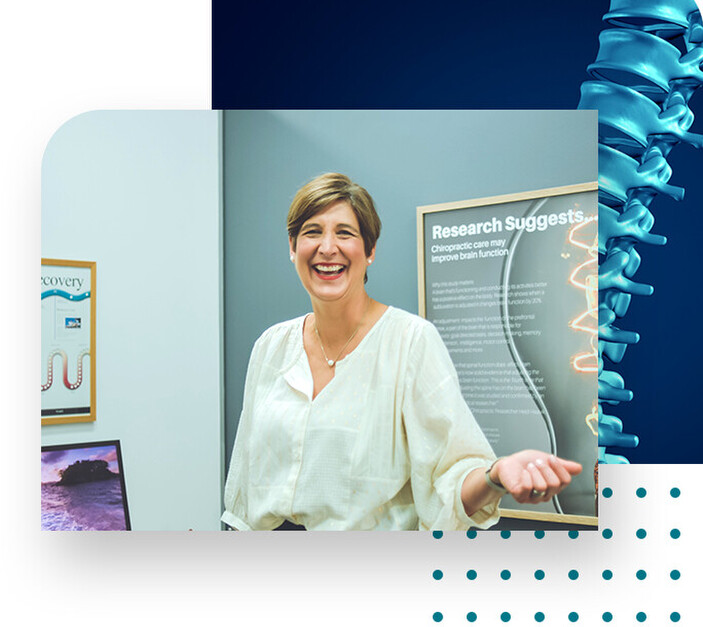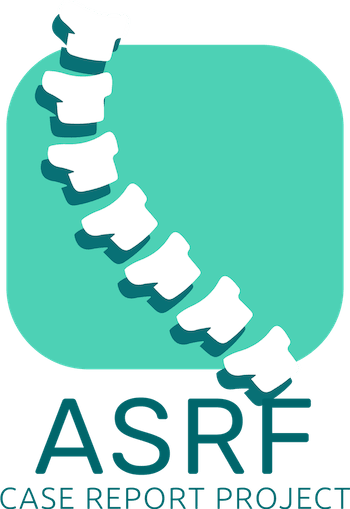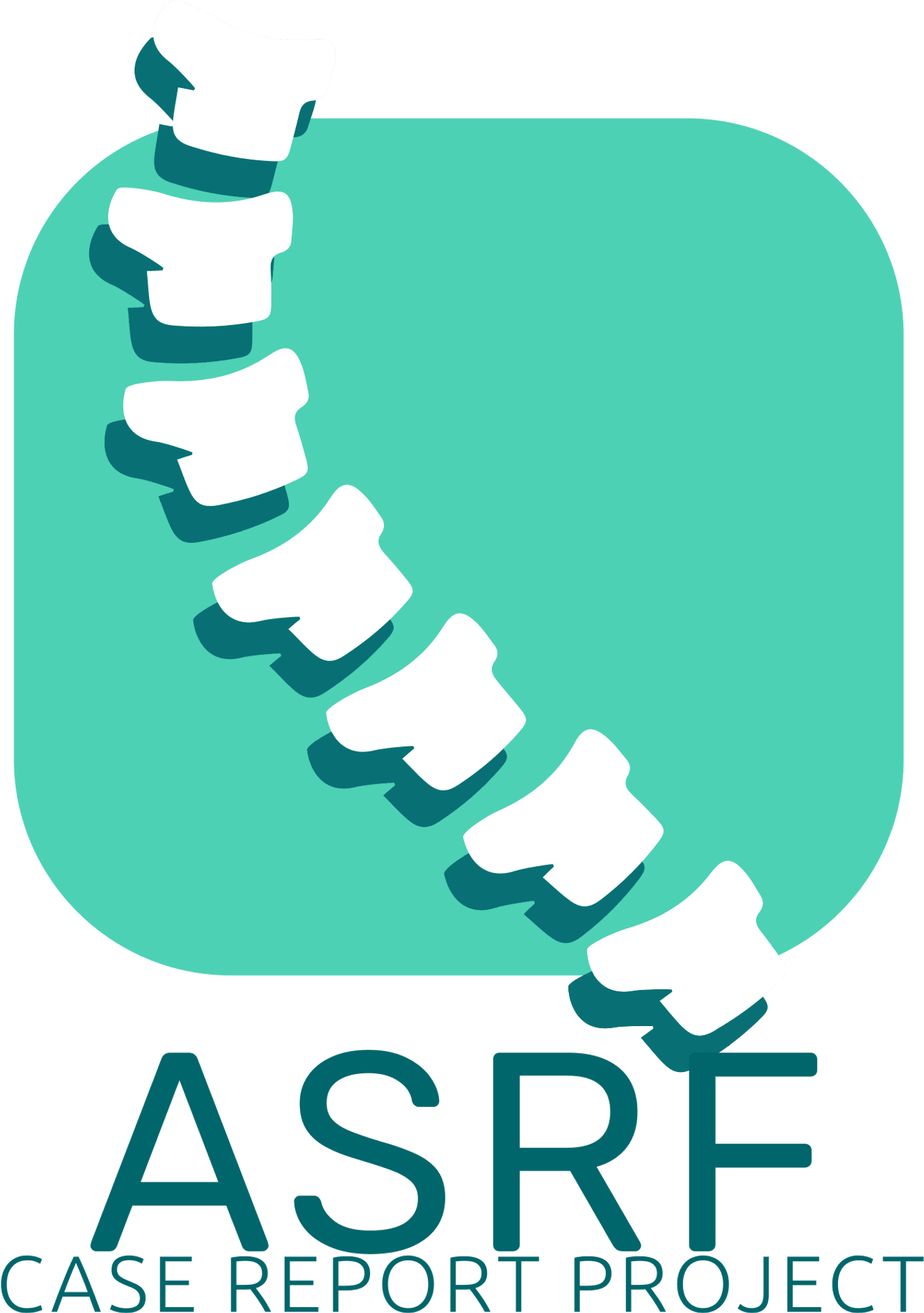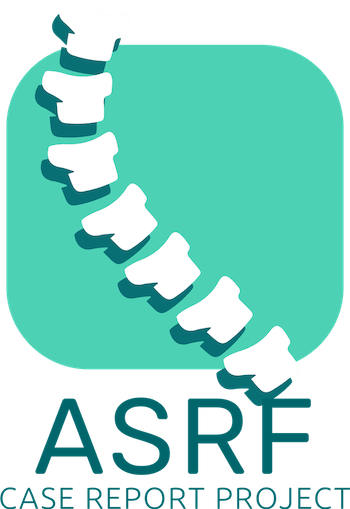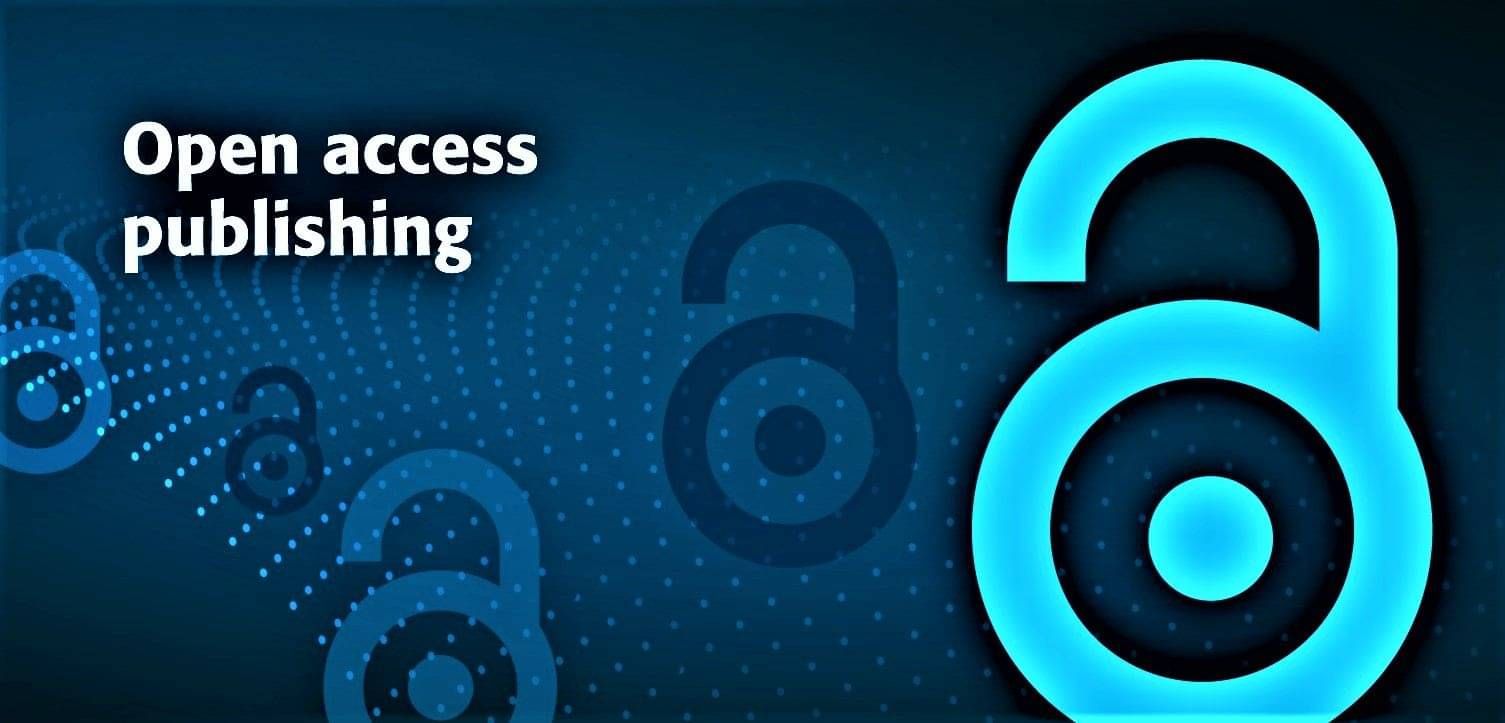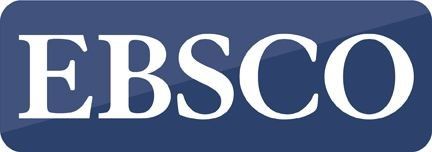'Call me paranoid. I'm frequently right.'
Seanan McGuire, A Local Habitation

Third Quarter 2023
(July - September)
Volume 4, Issue 1 (4.1)
Our wisdom in your pocket
ASRF Case Reports (Reproductive health)
Steinberg et al: Resolution of infertility concomitant with chiropractic care in a 28-year-old female
Kotlerman et al: Improved fertility outcomes following multiple IVF failures in a patient with Chronic Fatigue Syndrome and Hashimoto’s Disease
Steinberg et al: Improvement in reproductive health in a 38-year-old female under chiropractic care
Case Reports
Masarsky & Todres-Masarsky: Long COVID Pharyngitis, Possible Glossopharyngeal Neuralgia, and Subluxation
Shelley & Blum: Pregnancy, sacroiliac joint laxity, and the SOT category two pelvic distortion
Beck & Blum: Vision induced chronic low back pain
Beck: Vision induced migraine headaches
Champion: Base Posterior Sacrum Subluxation: A case series of 3
Walker: SOT and Nocturnal Enuresis in Children: Three Case Reports
Stowell & Blum: Correction of Pigeon Toe or In-Toeing in a 2½ y female (low force care, SOT)
Papers
Masarsky: The laboratory, inside and outside
Editorial: Towards truth and trust in the discipline of Chiropractic
Blum & Ebrall: Sacro Occipital Technique Research Conference 2023: Notes from Louisiana
Miller, B: Turn up, be present, and give
Yin et al: Clinical skills in job analysis of Korean Medicine professionals
Rome & Waterhouse: The Vertebral Subluxation premise: Part 1
Cuthbert at al: Applied Kinesiology Chiropractic and Traditional Chinese Medicine
Blum & Blum: Channelling healing energy: Awareness of Transference and Countertransference
Smith JC: Presidential Executive Order 14036 [Commentary]
Blum: Chiropractic care of post-concussion syndrome patients: Incorporating salivary biomarker assessment
Garcia: Narrative Systematic Review of studies of NSAIDS and LBP
McKibbin: Trustworthiness and EBM [Point of View]
Blum: Safety considerations of using gadolinium as a contrast agent for MRIs
Ebrall: A philosophy for Transnational Chiropractic education
Abstracts from the 14th Sacro Occipital Technique Research Conference 2023
Alvarez: A 5½ mo female successfully treated for plagiocephaly/brachycephaly with sacro occipital technique cranial protocols
Bloink & Blum: Treatment of an ageing patient with cervicogenic and craniocervical related tinnitus
Brayton: Ehlers-Danlos Syndrome: Co-Treatment of SOT Chiropractic, The Tupler Technique and Microcurrent
Boro: Chiropractic care of a 6-year-old male child presenting with severe eye trauma
Blum: Asymmetrical lumbar facets complicating a diversified HVLA lumbar side posture adjustment
Greene: 60 year old female presenting in acute pain wheeled into an office on a dolly
Bloink & Blum: Treatment of a patient with cervicogenic related vertigo
Lee: Sacro occipital technique care for a 7-year-old male patient with ADHD
Mirell: Sexuality in Our 55 Year Old and Older Patient Population
Blum: Grade three anterolisthesis L5/S1 of a 28 year old female
Nichols & Nichols: The effect of sacro occipital technique (SOT) category one procedures on Chiari type 1 and cystic syringomyelia
Stowell: Chiropractic in a integrative medical health practice: A narrative
Blum: Successful co-management of a patient with C7/8 nerve dysfunction scheduled for surgery
Weiner & Murzycki: Improvement in nasal turbinate and adenotonsillar hypertrophy and its concomitant symptomatology with paediatric chiropractic care
Priority Editorial
RMIT University kills its Chiropractic program in Victoria:
'To close without consultation a program of Chiropractic Education which has over 50 years made significant and lasting contributions to the Chiropractic discipline and profession in Australia is an unforgivable act of bastardry by RMIT University ...'
RMIT University kills its Chiropractic program in Victoria
Narrative: In August 2023 RMIT University (Melbourne, Australia) announced it would cease delivering a program of chiropractic education. The program commenced in 1975 and was the first in the world to be funded by a National government.
The profession learned of the closure through emails sent to students, a tawdry, amateurish tactic which has stimulated a strong response from the Australian Chiropractors Association and Chiropractic Australia.
A number of parties are complicit in the failure of the RMIT Chiropractic program: the institution and its academics of the discipline, the Council on Chiropractic Education Australasia as the accrediting body, and the Chiropractic Board of Australia which is meant to safeguard the public interest and safety which includes timely access to Chiropractic services across the life-span and the provision of quality education to achieve this.
The Australian community is now less-served as a result of RMIT University’s capricious and selfish action.
Indexing terms: Chiropractic; accreditation; RMIT; education; Professional Identity
Cite: Ebrall P. RMIT University kills its Chiropractic program in Victoria. Asia-Pac Chiropr J. 2023;4.2. URL apcj.net/Papers-Issue-4-1/#EbrallRMIT

Martin Harvey explores the issue
During this hour-long discussion with Prof Phillip Ebrall, Dr Martin Harvey explores the influences which have led to RMIT's closure of its program of Chiropractic education.
Did you know ... ?
Student demand for places in the three other Australian programs delivered by universities remains strong? Each has worked hard with CCEA to develop and improve its program; one is even raising the level of the qualification it offers.
A new program in final Government approval in another country in the region delivers a 6y program leading to a Doctor of Clinical Chiropractic, such is the regard for Chiropractic in that Nation.
The two private colleges in Australasia have strong enrolments and a growing number of applicants. Why did RMIT drop its entry-level ATAR score to 60, a very low figure and one reported on their website? The ATAR for Victoria University's Bachelor of Biomedicine is 94.3.
Why did RMIT reportedly spend around a million dollars restructuring the program only to close it? Where is the evidence base that its replacement, physiotherapy, has clinical outcomes as good as Chiropractic? Oh wait, maybe our society needs more Dieticians ...
Did you know Chiropractic is a Billion dollar annual business in Australia?
There is no logical reason for RMIT to not develop and strengthen its program of Chiropractic education which generates around AUD$16 Million income annually.
I should have told someone. But I didn’t.
I didn’t think it was anything significant until it was.
Iain Reid, I'm Thinking of Ending Things
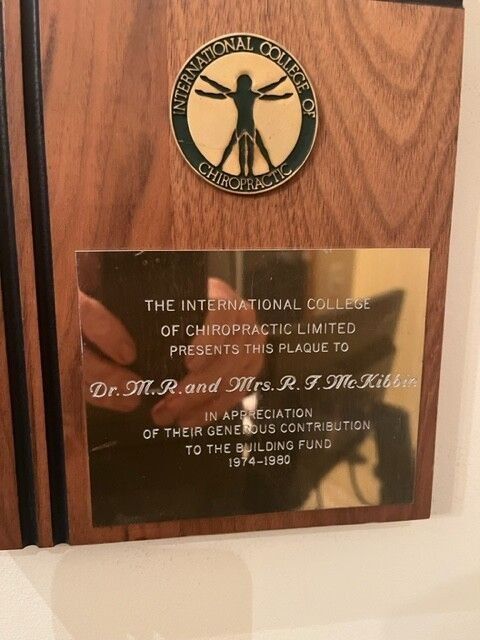
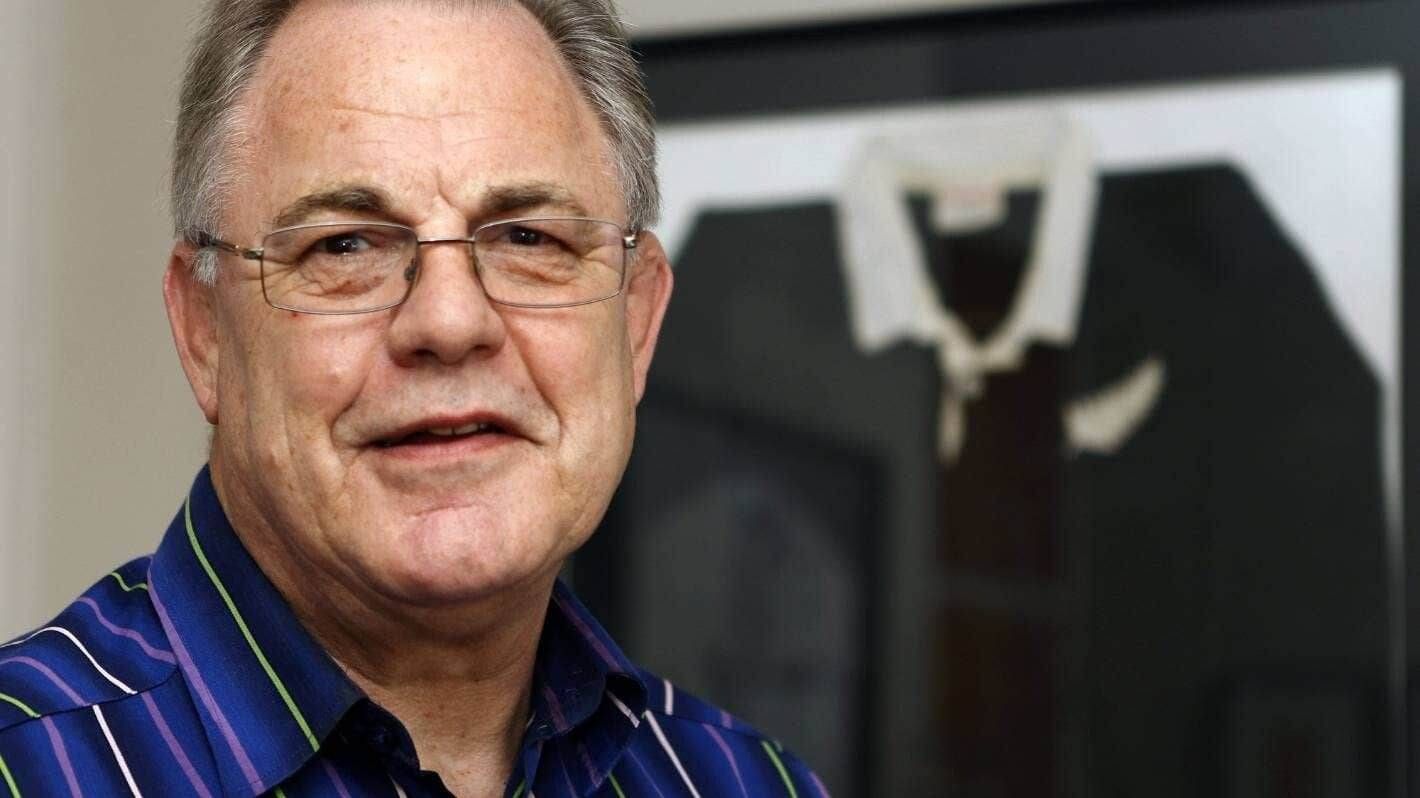
vale Dr John Loveday
We note with sadness the passing of Dr John Loveday of New Zealand and extend our sympathies.
Resolution of infertility concomitant with chiropractic care in a 28-year-old female: A case report
Background: A 28-year-old female presented for chiropractic care with a chief complaint of persistent infertility. With a current and past history of chronic stress, poor weight control and metabolism, she returned positive findings for subluxation prior to the commencement of care.
Management: The patient was managed using subluxation-based Chiropractic care, with Torque Release Technique, Integrator instrument and using Pelvic Drops, SOT blocks and manual (HVLA) adjustments for a period of 12 weeks.
Outcomes: The patient was able to achieve and maintain a viable pregnancy and gave birth to her first child following Chiropractic care.
Indexing Terms: Chiropractic; Subluxation; Torque Release Technique; fertility; pregnancy.
Cite: Steinberg B, Gordon K, Postlethwaite R, McIvor C. Resolution of infertility concomitant with chiropractic care in a 28-year-old female: A case report. Asia-Pac Chiropr J. 2023;4.1. URL apcj.net/papers-issue-4-1/#SteinbergFertility
Improved fertility outcomes following multiple IVF failures in a patient with Chronic Fatigue Syndrome and Hashimoto’s Disease
Background: A 32-year-old female presented for care with chief complaints of Chronic Fatigue Syndrome, Hashimoto's Disease and infertility. She had undergone five failed rounds of IVF, suffered one ectopic pregnancy, and reported significant levels of psychological stress, and a history of injury and physical trauma.
Treatment: The patient presented for care at a facility specialising in concentrated chiropractic care where a regenerative chiropractic and functional neurological protocol is followed", and wide-ranging blood panels and other testing are used to establish a baseline for the patient. She undertook two separate weeks of concentrated care, seven months apart.
Outcomes: Three weeks after the second week of care, she underwent another round of IVF and was able to achieve a healthy pregnancy which is progressing well in its third trimester at the time of writing. No other significant changes to her medical history or management were noted during this time, only the inclusion of a course of concentrated chiropractic care.
Indexing Terms: Chiropractic; Subluxation; ligamentous laxity; Hashimoto’s Disease; pregnancy; conception
Cite: McIvor C, Postlethwaite R, Martin A, Kotlerman S. Improved fertility outcomes following multiple IVF failures in a patient with Chronic Fatigue Syndrome and Hashimoto’s Disease: A Case Report. Asia-Pac Chiropr J. 2023;4.1 URL apcj.net/Papers-Issue-4-1/#AverioHashimoto
Improvement in reproductive health in a 38-year-old female under chiropractic care
Background: A 38-year-old female patient presented for chiropractic care with chief complaints relating to irregular menstrual cycles and infertility as well as tension in her neck, shoulders and low back. She commenced a course of chiropractic care for the reduction of subluxations using a variety of techniques to facilitate her care.
Outcomes: Following a course of chiropractic care a range of objective findings indicating improved autonomic nervous system function were noted alongside a reduction in the length of her menstrual cycle from 60-90 days to 43 days. We consider this indicates improved hormonal and reproductive health.
Indexing Terms: Chiropractic; subluxation; fertility; reproductive health; pregnancy
Cite: Steinberg B, Gordon K, Postlethwaite R, McIvor C. Improvement in reproductive health in a 38-year-old female under chiropractic care: A case report. Asia-Pac Chiropr J. 2023;4.1. URL apcj.net/papers-issue-4-1/#SteinbergReproductiveHealth
Case Reports
Long COVID Pharyngitis, Possible Glossopharyngeal Neuralgia, and Subluxation: A case report
Abstract: A 79-year-old woman was seen 121 days after hospital admission for a severe episode of COVID-19. Her long COVID problems included fatigue, problems with long-term and short-term memory, dyspnea, and dryness in the mouth. She had a feeling of ‘razor blades’ in her throat that began at the onset of infection. This possibly neuralgic pain was thought by the patient to be ‘how the COVID began’. She also suffered from pharyngitis experienced as a constricted feeling in her throat. At presentation, reverse digit span was 4, and forced vital capacity was 1.7 litres.
Chiropractic adjustments for the correction of vertebral, cranial, and upper extremity subluxations were administered for six visits over a period of four weeks. Adjunctive procedures included acupressure stimulation at the yin tang point during visits and oropharyngeal exercises as home care. During office visits, oropharyngeal exercises were combined with neurolymphatic stimulation for the sternocleidomastoid muscles.
With the exception of fatigue, the patient reported improvement in general and across all other symptoms. Her forced vital capacity increased to 2.3 litres. Her reverse digit span increased to 5.
Indexing Terms: Chiropractic; Subluxation; Long COVID; Pharyngitis, Glossopharyngeal Neuralgia
Cite: Masarsky CS, Todres-Masarsky M. Long COVID Pharyngitis, Possible Glossopharyngeal Neuralgia, and Subluxation: A case report URL Asia-Pac Chiropr J. 2023;4.1. URL apcj.net/Papers-Issue-4-1#MasarskyTodresMasarskyLongCovid
Pregnancy, sacroiliac joint laxity, and the SOT category two pelvic distortion: A case series
Introduction: Sacroiliac (SI) joint laxity associated with pregnancy and delivery is purported to cause objective findings of an sacro occipital technique (SOT) category two pelvis. SOT describes a category of pelvic girdle pain and/or low back pain (PLPP) associated with increased posterior SI joint motion or ligamentous laxity called category two. This retrospective case series study involved 103 pregnant women age range from 21-32 years old were seen at this clinic from 1979-83.
Methods: Patients were evaluated via SOT diagnostic protocol, which included the SOT arm fossa test, increased unilateral or bilateral iliopsoas tension, palpation for pelvic torsion, leg length differentials, and Moiré contour photography.
Results: Using SOT’s arm fossa test as a method to evaluate clinically active category two or sacroiliac joint laxity, a large percentage of the patients (95%) had Arm Fossa Test positive (AFT+) findings, with 5 of the 103 patients having an Arm Fossa Test negative (AFT-). AFT- findings were associated with reduction or elimination of pelvic or inguinal pain, improvement of muscle strength and ability to rise from seated position as well as lift or carry objects, and improved sleeping and restfulness.
Discussion: Further study would be of value to determine if the AFT can become part of a series of tests used to assess the need for care of PPLP as well as if there is successful patient response to treatment. While pain during pregnancy is of great concern it is also of interest to determine whether proper sacroiliac joint juxtaposition may be related to foetal head position and birth outcome.
Conclusion: The biological plausibility of the treatment and the low force nature of the pelvic block placement offer a low risk procedure for pregnant patients that warrant a call for greater study and research investigation.
Indexing Terms: Chiropractic, Sacro-Occipital Technique (SOT); Arm Fossa Test; LBP; Pregnancy
Cite: Shelley JR, Blum CL. Pregnancy, sacroiliac joint laxity, and the SOT category two pelvic distortion: A case series. Asia-Pac Chiropr J. 2023;4.1. URL apcj.net/papers-issue-4-1/#ShelleyBlumPregnancy
Vision induced chronic low back pain: A case report
Introduction: A 34-year-old female patient presented with a history of low back pain (dull, achy, and non-radiating) that had been present for nearly two-years.
Methods: The patient reported complete relief of her chronic low back pain with her eyes closed or in a darkened room, whereas the pain would return when opening her eyes and particularly in a lightened room, with or without eyeglasses.
Treatment: Osteopathic manipulative therapy (OMT) to the full body and cranium was applied with the patient’s eyes opened, closed, and eyeglasses on and off. Modifications were made to the optometric prescription and eyeglasses to optimise body and cranial function as well as to reduce her low back pain.
Results: The patient noted considerable relief in her low back pain with the new eyeglass prescription, and this relief was sustained regardless of eyes open or closed, and particularly with her eyeglasses on.
Conclusion: This case study illustrates that a subset of patients may present with a clinical condition that either affects vision or where the vision affects the condition, called a visual somatic strain. This demonstrates how collaborative efforts might be made to develop co-treatment opportunities between osteopaths, chiropractors, ophthalmologists, and other allied professionals.
Indexing Terms: Chiropractic, Osteopathy; Cranial; Visual Somatic Strain; LBP
Cite: Beck C, Blum CL. Vision induced chronic low back pain: A case report. Asia-Pac Chiropr J. 2023;4.1. URL apcj.net/papers-issue-4-1/#BeckVisionLBP
Cranial therapeutic applications to facilitate dentofacial growth and development in a 50-year-old adult female: A case report
Introduction: A 50-year-old female patient previously under chiropractic care due to multiple presenting symptoms (e.g., temporomandibular joint dysfunction, obstructive sleep apnea, mitochondrial disorders, and others) was being co-treated with sacro occipital technique cranial and TMJ techniques and a dentist practicing functional orthodontics (e.g. Alternative Lightwire Functional [ALF] and The Crane) for under-developed craniofacial growth and development.
Intervention/Methods: The patient began orthodonture/orthopedic dental care using an ALF maxillary appliance to create hard palate expansion and she started using the CRANE at night to facilitate forward advancing of her maxilla. A system of sacro occipital technique cranial related procedures focused on craniofacial expansion and tongue procedures were utilised to facilitate the reduction of her head and neck tension and improving her cranial suture flexibility to optimally affect the outcome of the orthodontic/orthopedic dental interventions.
Results: During the three years of dental/chiropractic co-treatment the patient’s cervicothoracic pain and discomfort went from a chronic (over a decade) 6-8 on a visual analogue scale (10 being most painful) to a steady 1-2, and 3-4 during a flare-up, which occur during increased physical and emotional stress approximately 3-4 times a year, lasting 3-5 days.
Conclusion: Greater study is needed to determine if these conservative chiropractic treatment procedures can be helpful to paediatric and adult patients receiving maxillary expansion and advancement.
Indexing Terms: Chiropractic; Sacro-Occipital Technique (SOT); Cranial Technique; Alternative Lightwire Functional (ALF); temporomandibular; TMJ; craniofacial growth and development
Cite: Blum CL. Cranial therapeutic applications to facilitate dentofacial growth and development in a 50-year-old adult female: A case report. Asia-Pac Chiropr J. 2023;4.1. URL apcj.net/papers-issue-4-1/#BlumDentofacialGrowth
Base Posterior Sacrum Subluxation: A case series of 3
Abstract: Base posterior sacrum or sacral base posterior, in Gonstead terminology describes a subluxation listing and also the adjustment used to correct it. The subluxation is in the L5/S1 segment, but the adjustment used to make the correction is crucially different to an L5 adjustment for both safety and effectiveness. This is a study of three patients who had base posterior sacrum subluxations adjusted and corrected.
Indexing Terms: Gonstead; Chiropractic; subluxation; adjustment; base posterior sacrum; Oswestry
Cite: Champion S. Base Posterior Sacrum Subluxation: A case series of 3. Asia-Pac Chiropr J. 2023;4.1. URL apcj.net/Papers-Issue-4-1/#ChampionBPSacrumx3
Vision induced migraine headaches: A case report
Introduction: A 53-year-old female patient presented with a history of migraine-type, intense headaches, ‘dizziness’ and ‘eyestrain’ that began approximately 7 months ago. A relationship was noted between her migraines and vision.
Methods: The patient was evaluated utilising osteopathic manipulative therapy (OMT) and cranial therapy for meningeal and sutural stress patterns with glasses on and off, and eyes opened and closed.
Treatment: Osteopathic manipulative therapy (OMT) to the full body and cranium was applied with the patient’s eyes opened, closed, and glasses on and off. Modifications were made to the optometric prescription and eyeglasses to optimise body and cranial function as well as to reduce headache/migraines.
Results: The patient noted considerable relief in her eyestrain and physical tension with the new eyeglass prescription and noticed that her entire body felt relaxed and that the pressure in her head had disappeared.
Conclusion: This case study illustrates that a subset of patients may present with a clinical condition that either affects vision or the vision affects the condition called a visual somatic strain. This illustrates how collaborative efforts might be made to develop co-treatment opportunities between osteopaths, chiropractors, ophthalmologists, and other allied professionals.
Indexing Terms: Chiropractic, Osteopathy; Cranial; Migraine; vision; visual fatigue
Cite: Beck C. Vision induced migraine headaches: A case report. Asia-Pac Chiropr J. 2023;4.1. URL apcj.net/papers-issue-4-1/#BeckVisionMigraine
Sacro Occipital Technique (SOT) Chiropractic and Nocturnal Enuresis in Children: A report of three cases
Introduction: Nocturnal Enuresis is when bedwetting continues past an age where the bladder is neurologically and physically developed to be able to hold the urine all night. This case series shares three children with nocturnal enuresis presenting for chiropractic assessment and treatment.
Methods/Intervention: The three children in this study had some common physical examination findings such as decreased right psoas and left lower core (transverse abdominus) muscle strength, persisting positive Spinal Galant primitive reflex, large right thoracic translations, and sacro occipital technique (SOT). Chiropractic manipulative reflex technique (CMRT) finding of occipital fibre line #2-T11/12 with CMRT kidney reflexes being active and signs of kidney ptosis.
A care plan began with two visits per week for three weeks, to be followed by a reassessment. The three children were each adjusted using SOT techniques including the pre-blocking techniques: Kidney ptosis and psoas correction. Spinal subluxations were monitored and adjusted as indicated. Occipital reflex lines were monitored and T11/12 reflexes were performed until the reflex was no longer active. CMRT reflex kidney technique was performed when indicated.
Results: At the three-week re-examination of all three children it was noted that: (i) All muscle tests were now within normal limits, (ii) Posture was significantly improved, (iii) The Spinal Galant primitive reflex was now absent, and (iv) Report of the parent and child indicated that bedwetting had significantly decreased.
Conclusion: After their plan of care, including spinal adjustments, plus SOT techniques to balance the viscerosomatic and somatovisceral reflex activity, their nocturnal enuresis markedly reduced. Following a series of adjustments, all muscle tests, and primitive reflexes were within normal limits and their posture had improved.
Indexing terms: Enuresis; Bedwetting; Chiropractic; Sacro Occipital Technique; SOT; Chiropractic Manipulative Reflex Technique; CMRT; Occipital Fibres
Cite: Walker R. Sacro Occipital Technique (SOT) Chiropractic and Nocturnal Enuresis in Children: A report of three cases. Asia-Pac Chiropr J. 2023;4.1. URL apcj.net/papers-issue-4-1/#WalkerEnuresisx3
Correction of Pigeon Toe or In-Toeing in a 2½ y female with Chiropractic treatments: A case report
Introduction: Pigeon-toe or in-towing is a relatively common condition in childhood causing the toes to point inward or feet to excessively internally rotate when standing or walking. While this condition usually resolves as the child ages it does appear to affect a child’s gait, causing repetitive falls. Sometimes a child’s self-esteem may also be adversely affected by this condition. This case report discusses care rendered to a 2 ½ year old female child presenting for chiropractic care with bilateral in-toeing in an interdisciplinary clinic.
Methods: Treatment was rendered that included “low force techniques,” Sacro-occipital technique, and cranial techniques to address spinal, lower extremity, and postural imbalances ~ possibly contributing to the patient’s in-toeing.
Results: Following the third treatment, the patient was able to walk with one foot pointing straight ahead and by the fourth office visit was walking and standing with both feet pointing straight ahead. Further care continues to sustain progress with intervals between treatment extended as the patient’s progress is maintained.
Conclusion: This case may demonstrate a conservative, effective treatment for a subset of children presenting with in-toeing ~ particularly when watching and waiting is not preferred and the child’s gait, repetitive falls, and self-esteem is being adversely affected by this condition.
Indexing Terms: Chiropractic, Sacro-Occipital Technique (SOT); Pigeon Toe; In-Toeing
Cite: Stowell LM, Blum CL. Correction of Pigeon Toe or In-Toeing in a 2½ y female with Chiropractic treatments: A case report. Asia-Pac Chiropr J. 2023;4.1. URL apcj.net/papers-issue-4-1/#StowellBlumIn-toe
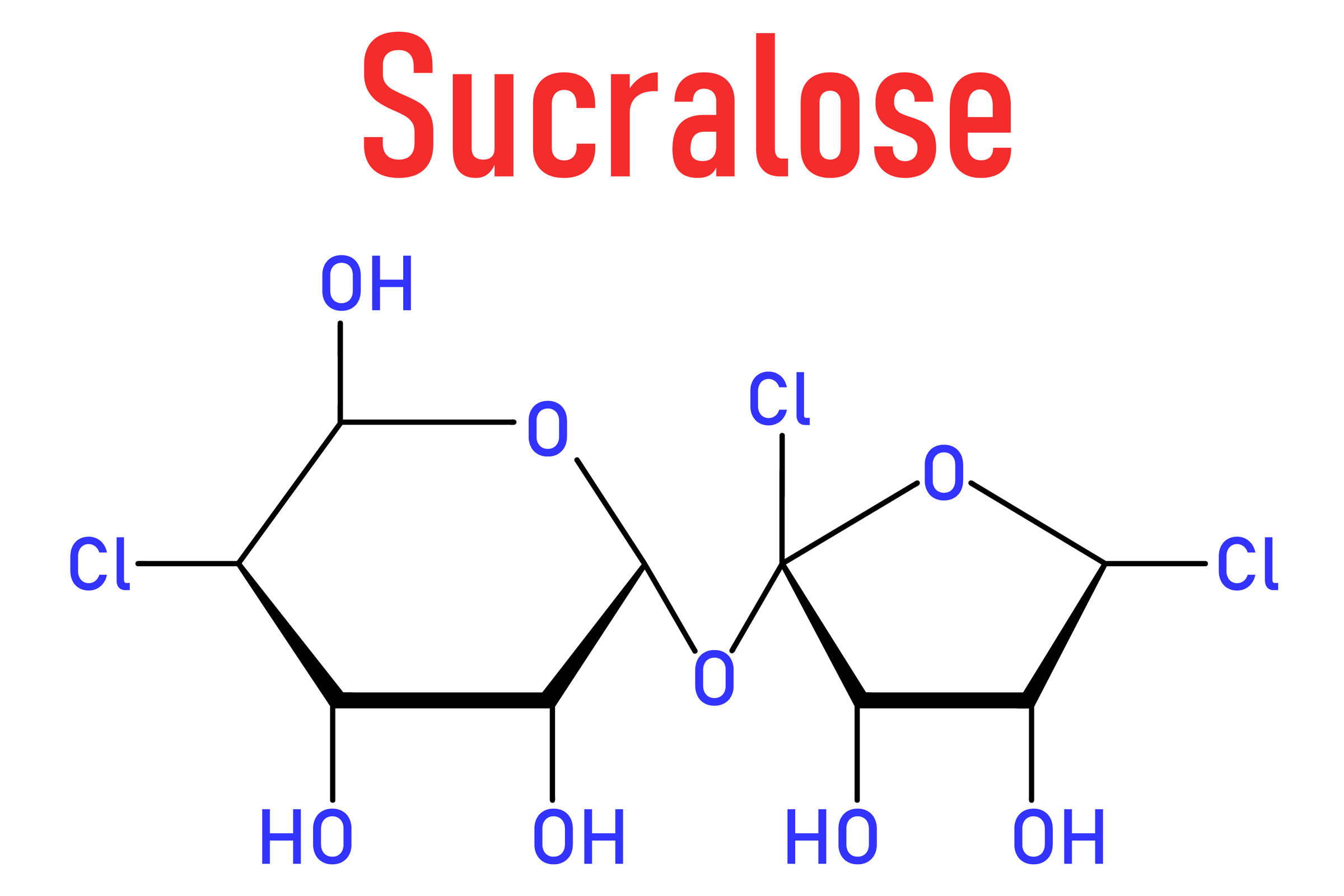
No more Splenda
Sucralose is sold under the brand name Splenda and is also used as an ingredient in packaged foods and beverages. Researchers found that sucralose causes DNA to break apart, putting people at risk for disease. They also linked sucralose to leaky gut syndrome. Symptoms are a burning sensation, painful digestion, diarrhoea, gas, and bloating. Read more. Diet Coke and Red Bull are made with sucralose.
See WHO Advises Against Nonsugar Sweeteners for Weight Control
As is our experience with all clinical matters, Chiropractors will be expecting a contrary view: It is here.
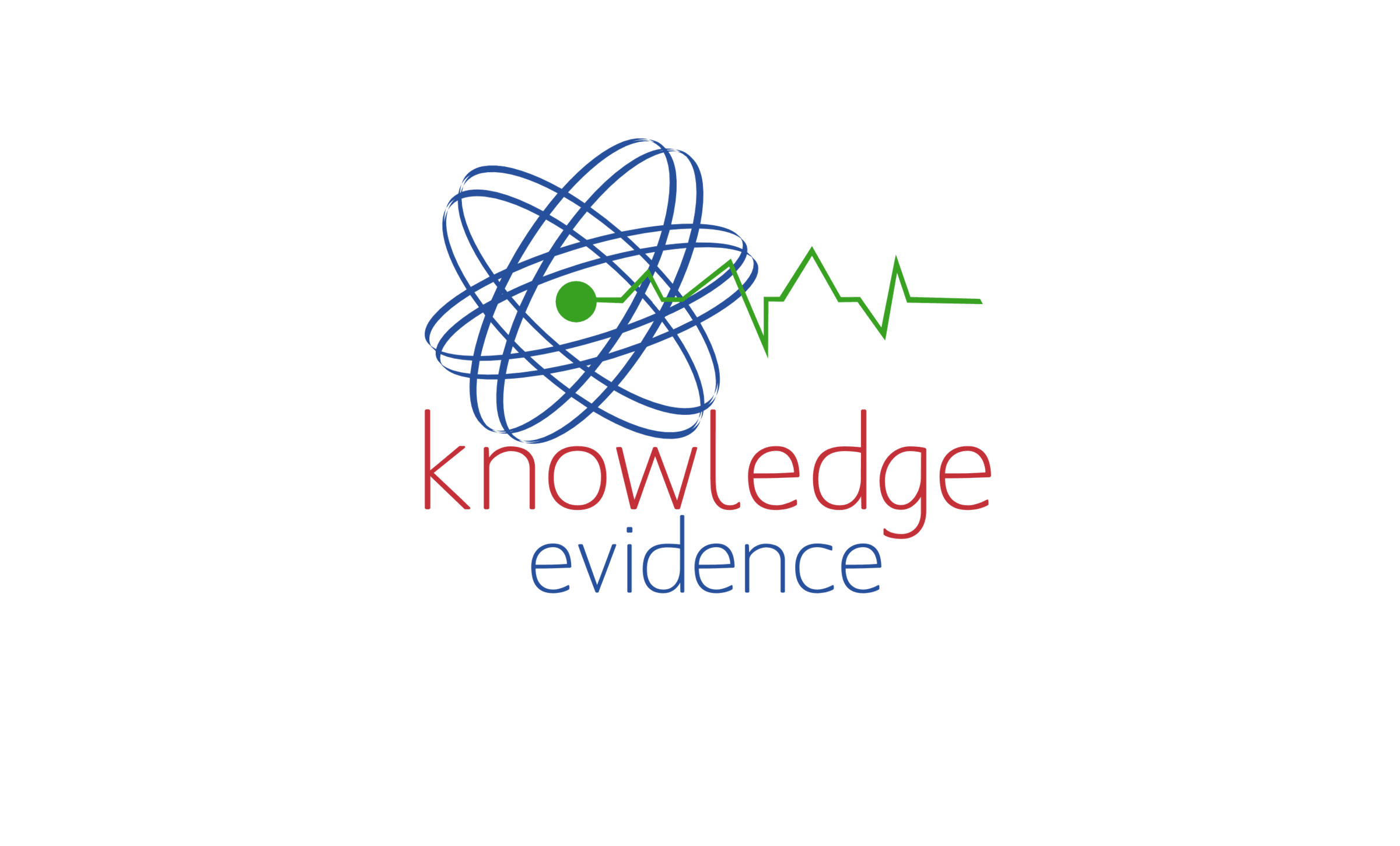
The laboratory, outside and inside
Narrative abstract: The town in which you practice is your outside laboratory. Your role as a Chiropractor is to accept people from that laboratory and figure out what has happened to them to upset their state of well-being.
Your clinic is your ‘inside laboratory’ and the ideal way to report your clinical activities in your laboratory (clinic) is by writing a Case Report.
This masthead supports the ASRF Case Report Project which is currently calling for submissions.
Indexing terms: Chiropractic; Case Reports; ASRF
Cite: Masarsky CS. The laboratory, outside and inside [The wide-angle lens]. Asia-Pac Chiropr J. 2023;4.1. URL apcj.net/papers-issue-4-1/#MasarskyLaboratory
Towards truth and trust in the discipline of Chiropractic
Narrative abstract: A past criticism of the discipline of Chiropractic has been that it is not based on evidence. This claim is spurious yet it has generated a cadre of Chiropractic researchers focussed on publishing sufficient studies to constitute an evidence base. The state of this literature is such that it now allows Systematic Reviews to be undertaken and position papers presented.
However a landmark thesis by Dr Simon Senzon and a finely constructed examination of positions by Oakley and Harrison have collectively found an unacceptable level of literature abuse and misuse by a number of Chiropractic authors. These findings now create a level of untrustworthiness with what is presented by a few as ‘evidence-based’ positions.
This editorial explores this issue and specifically points to the GCC of the UK which has published eminence-based standards for Chiropractic education which are blatant in their omission of evidence contrary to their agenda.
Indexing terms: Chiropractic; evidence; literature; trust; CBP
Cite: Ebrall P. Towards truth and trust in the discipline of Chiropractic. Asia-Pac Chiropr J. 2023;4.1. URL apcj.net/Papers-Issue-4-1/#EbrallEditorial2023Q3
Sacro Occipital Technique Research Conference 2023: Notes from Louisiana
Narrative abstract: The annual research conference of the Sacro Occipital Technique Organization (USA) was held in Louisiana, New Orleans, 28 April 2023.
These brief notes are extracted from the Conference Proceedings and address the importance of chiropractors documenting their clinical practice in the form of case reports.
The founder of SOT, Major Bertrand DeJarnette. presented his initial research findings in 1935. Since then the specialty field of Sacro-occipital Technique (SOT) has grown and now presents an annual conference in North America.
A core theme of this year’s meeting was the role that Case Reports play in the documentation of different aspects of clinical experience, different patient experiences and outcomes, and the importance of these to inform further research and scholarly inquiry.
Indexing terms: Chiropractic; case report; publication
Cite: Blum CL, Ebrall PS. Sacro Occipital Technique Research Conference 2023: Notes from Louisiana. URL Asia-Pac Chiropr J. 2023;4.1 URL apcj.net/Papers-Issue-4-1/#BlumEbrallSOTResearchNotes
Turn up, be present, and give: Leadership in the making
Narrative abstract: The World Congress of Chiropractic Students is the global representative body of chiropractic students and recent graduates. Participation is through a local chapter based in a chiropractic educational institution.
All students in all colleges are invited to join this dynamic and growing body which presently has 20 chapters around the world.
The three key elements for successful participation are the same as those for establishing a successful practice: turn up, be present, and give.
Indexing terms: Chiropractic; World Congress of Chiropractic Students, WCCS, Leadership
Cite: Miller B. Turn up, be present, and give: Leadership in the making. Asia-Pac Chiropr J. 2023;4.1 URL apcj.net/papers-issue-4-1/#MillerTurnupandgive
Clinical skills in job analysis of Korean Medicine professionals: acupuncture, Chuna manual medicine, and herbal medication
Purpose: This study aims to identify the clinical skills of Korean Medicine professionals.
Methods: Skill contents reported in job analysis were systematically classified and analyzed by (1) four main criteria of examination, procedural, communication, and management skills, and (2) the criteria of clinical skills stipulated in Korean Medicine Education Accreditation Standards 2021 (KAS2021).
Results: In a total of 794 clinical skill contents, procedural and examination skills were found to account for 97.0% of four main criteria. Non-pharmacological intervention skills such as acupuncture and Chuna manual medicine, physical examination skills, and herbal medication skills accounted for 83.6% of the KAS2021 criteria.
Conclusion: Korean Medicine doctors' clinical skills were analyzed to center around acupuncture, Chuna manual medicine, and herbal medication that are unique to the Korean Medicine profession. These clinical skills will serve as core components of Korean Medicine education programs and national licensure examinations
Indexing terms: Job analysis, Korean Medicine, clinical skills, acupuncture, Chuna manual medicine
Cite: Yin CS, An HE, Yoo JH, Lee S. Clinical skills in job analysis of Korean Medicine professionals: acupuncture, Chuna manual medicine, and herbal medication. Asia-Pac Chiropr J. 2023;4.1. URL apcj.net/Papers-Issue-4-1/#YinetalKoreanJobAnalysis
The Vertebral Subluxation premise:
Part 1: The medical literature regarding nomenclature
Narrative abstract: The sheer volume of medical, physiological and clinical citations presented in this paper demonstrate the degree of recognition within the medical and related literature of the chiropractic model of the Vertebral Subluxation Complex. This literature is additional to that from the chiropractic perspective which is available in the electronic Index to Chiropractic Literature.
This paper demonstrates the tacit acknowledgement and weight of recognition of the vertebrogenic effect of physical, biomechanical, and physiological vertebral disturbances.
We demonstrate that the clinical practices of chiropractic, manipulative medicine and osteopathy collectively recognise the biomechanical and physiological phenomena and associated neural ramifications of spinal lesions.
We present the preponderance of papers from the field of manipulative medicine which support the chiropractic nomenclature of of the Vertebral Subluxation Complex.
Indexing terms: Subluxation; Vertebral Subluxation Complex; vertebrogenic nomenclature; manipulation
Cite: Rome PL. Waterhouse JD. The Vertebral Subluxation premise: Part 1: The medical literature regarding nomenclature. Asia-Pacific Chiropr J. 2023;4.1. URL apcj.net/papers-issue-4-1/#RWVSCPremisePart1
Applied Kinesiology Chiropractic and Traditional Chinese Medicine
Narrative abstract: In modern Western chiropractic health care we find many similarities between our approach and that of both ancient and present-day Traditional Chinese Medicine (TCM) doctors or the acupuncture profession. First, we are concerned with the control of organs, glands, and tissues, primarily by way of the nervous system. Rather than give a patient a drug to influence an organ, we find out why the organ is not functioning as it was designed to and then release that interference. This correlates with the acupuncturists’ attempts to balance Chi within the body. Second, chiropractors are concerned with diet and nutrition and lifestyle in order to give the body the building blocks it needs to live, and to be certain there are no adverse chemicals and pollutants interfering with normal body function. This paper presents a detailed explanation of the integration of TCM within Applied Kinesiology Chiropractic, and its justification within modern biomedical science.
Indexing terms: Applied Kinesiology; Chiropractic; Traditional Chinese Medicine; TCM, Chi
Cite: Cuthbert S, Stump JL, Stark B. Applied Kinesiology Chiropractic and Traditional Chinese Medicine. Asia-Pac Chiropr J. 2023;4.1. URL apcj.net/papers-issue-4-1/#CuthbertAKandTCM
Channeling healing energy: Awareness of Transference and Countertransference in the Chiropractic Clinical Encounter, Part four
Narrative abstract: Transference and countertransference are psychodynamic terms for how a person’s past experiences and relationships colour their perception and engagement in current relationships. Transference is the act of a patient unknowingly transferring feelings from their past onto the doctor and the doctor patient relationship. Countertransference is the act of a doctor unknowingly transferring feelings from their past onto the patient and the patient doctor relationship. Transference and countertransference are always present and cultivating an awareness of these unconscious behaviours are important for optimal doctor and patient relationships. Especially since the chiropractic encounter usually involves touch it is the physician’s responsibility to carry the consciousness or therapeutic awareness in any healthcare relationship.
Indexing terms: Chiropractic; chiropractor; transference; countertransference
Cite: Blum CL, Blum JD. Channelling healing energy: Awareness of Transference and Countertransference in the Chiropractic Clinical Encounter, Part four. URL Asia-Pac Chiropr J. 2023;4.1 URL apcj.net/Papers-Issue-4-1/#BlumHealingEnergy4
Presidential Executive Order 14036 [Commentary]
Narrative abstract: Open and fair commentary on the intrigues of managed care comes with a cost. Following one well documented report Chiropractor and author James Smith felt the wrath from a major provider which revoked his credentials thus denying him access to 75% of his patients.
In this commentary Smith examines Presidential Executive Oder 14036 which is meant to ‘to enforce the antitrust laws to combat the excessive concentration of industry, the abuses of market power, and the harmful effects of monopoly and monopsony, especially in healthcare markets’.
Perhaps this is an optimistic expectation. Smith explains the issues associated with this matter in this paper which is based on his letter to the Biden White House.
Indexing terms: Chiropractic; Biden Executive Order; competition; market share; managed care
Cite: Smith JC. Presidential Executive Order 14036 [Commentary]. Asia-Pac Chiropr J. 2023;4.1 URL apcj.net/Papers-Issue-4-1/#SmithExecutiveOrder
Building interdisciplinary relationships with chiropractic care of post-concussion syndrome patients: Incorporating salivary biomarker assessment
Objective: The field of chiropractic has been actively involved in treating athletic injuries that include concussions and post concussion syndrome. Ideal care for concussions can be improved with chiropractors building interdisciplinary relationships and optimising their understanding of concussion differential diagnosis.
Methods: A review of the literature sought to find a way of bridging communication between healthcare providers by helping chiropractors develop usage of common outcome assessment forms and tests.
Results: The review determined that athletes with concussion are currently best evaluated with the Immediate Post-Concussion Assessment and Cognitive Testing (ImPACT) and Sport Concussion Assessment Tool (SCAT) outcome assessments along with utilisation of salivary microRNA levels to help identify the duration and character of possible concussion symptoms.
Conclusion: A three phase assessment process utilising the ImPACT, SCAT, and testing of salivary microRNA would offer relatively non-invasive low cost options to clarifying the best treatment for a concussed patient, as well as offer a possible prediction model of outcomes. As chiropractors build interdisciplinary co-treatment models for care of athletic head trauma, familiarity with standard assessment tools and tests will improve team building strategies, optimal patient care and outcomes.
Indexing terms: Chiropractic; athlete; concussion; salivary biomarkers; microRNA
Cite: Blum CL. Building interdisciplinary relationships with chiropractic care of post-concussion syndrome patients: Incorporating salivary biomarker assessment. URL Asia-Pac Chiropr J. 2023;4.1 URL apcj.net/Papers-Issue-4-1/#BlumSalivaryBiomarkers
Narrative Systematic Review of studies of NSAIDS and LBP
Background: Spinal manipulation therapists such as chiropractors emphasise, they are quintessential primary carers of low back pain (LBP) sufferers however, the most common and primary treatment in managing this pain are analgesics.
Introduction: This systematic narrative review aims to answer the clinical question regarding what treatment intervention is suitable in pain management in both adults and geriatric populations suffering from either subacute, acute or chronic LBP with the interventions being high velocity low amplitude spinal manipulation therapy (HVLA-SMT) compared to over the counter (OTC) medications such as non-steroidal anti-inflammatory drugs (NSAIDS) or muscle relaxants.
Method: An online search through six databases yielding 236 possible results used with key terms and exclusion and inclusion criteria for relevance to the clinical question leaving for a filtered twenty research papers consisting of nine randomised control trials, five systematic reviews, one observational study, one cross sectional study, one case study and three professional guidelines which were graded for quality control against clinical appraisal and risk of bias tools.
Results: The published literatures LBP outcome measures of pain indexes were extrapolated into comparable tables and where assessed concluding with mixed results regarding the efficacy of pain management of HVLA-SMT when compared to OTC medications being either minimal, same or none.
Conclusion: Although the vast majority of data demonstrates SMT as having a similar pain management effects as OTC medication a necessary review is needed into the quality of experiments conducted as the bias tools have demonstrated many inconsistencies with how data was obtained and handled.
Indexing terms: Chiropractic; SMT; LBP; NSAIDS; OTC; geriatrics
Cite: Garcia J. Narrative Systematic Review of studies of NSAIDS and LBP. Asia-Pac Chiropr J. 2023;4.1. URL apcj.net/Papers-Issue-4-1/#GarciaSRLBPNSAIDS
Trustworthiness and EBM [Point of View]
Narrative abstract: The Type M and Type O distinctions are artificial and were imposed on the Chiropractic profession by political medicine during the 1978/79 New Zealand Commission of Inquiry. It is contained in the ‘Report of the Commission of Inquiry presented to the House of Representatives by Command of His Excellency the Governor-General’.
Along with rejecting this imposition Chiropractors must also continue to question the imposed mantra of Evidence Based Medicine as being solely indicative of contemporary medical practice. The evidence shows only a very small percentage of medical decisions are actually based on any evidence at all.
In this regard chiropractors must remain questioning of what is increasingly shown to be an questionable evidence base.
Indexing Terms: Chiropractic, EBM, Type O, Type M
Cite: McKibbin M. Trustworthiness and EBM [Point of View ]. Asia-Pac Chiropr J. 2023;4.1. URL apcj.net/Papers-Issue-4-1/#McKibbinEBM
Safety considerations of using Gadolinium as a contrast agent for MRIs: A Commentary
Narrative abstract: Gadolinium is commonly used to provide contrast with MRI scanning. As with all clinical procedures there are risks and benefits.
Chiropractors should have an awareness of current perspectives to be better able to inform a patient who may be scheduled for, or has recently had, a Gadolinium-contrast MRI scan.
Indexing terms: Chiropractic; Gadolinium; Risk-benefit; MRI
Cite: Blum CL. Safety considerations of using gadolinium as a contrast agent for MRIs: A Commentary. URL Asia-Pac Chiropr J. 2023;4.1 URL apcj.net/Papers-Issue-4-1/#BlumGadolinium
A philosophy for Transnational Chiropractic education
Narrative abstract: This paper follows an earlier exploration of the philosophy of chiropractic education in which a history was given along with predictions for future directions.
That paper, which I call the prelude paper, provides the context for this current paper in which I draw on the known basic approaches to the philosophy of education to extract and apply those elements I believe best represent the optimal philosophical framework for a program of chiropractic education. This synthesis is new as while the literature presents a number of reports about enhancing the elements of a chiropractic program there seems to be no over-arching philosophy for chiropractic education argued at this time.
This paper reports a philosophy for a program of chiropractic education and argues in its favour. The program of reference is the Transnational Curriculum developed for Nations without a current program of chiropractic education.
Indexing terms: chiropractic; education; philosophy; philosophy of education
Cite: Ebrall P. A philosophy for transnational chiropractic education. Asia-Pac Chiropr J. 2023;4-1. URL apcj.net/papers-issue-4-1/#EbrallPhilosophyofEducation
B Sharp! Your personal music journey to expand the mind, enhance the brain and age well. Phil Maffetone
Book: Maffetone P. B sharp. For release early July. To be on the mailing list for this exclusive book go here and leave your email address.
Indexing Terms: Chiropractic; music therapy; book review; B sharp
Cite: Ebrall P. B Sharp! Your personal music journey to expand the mind, enhance the brain and age well. Phil Maffetone [Book Review]. Asia-Pac Chiropr J. 2023;4.1. URL https://www.apcj.net/papers-issue-4-1/#BookReviewMaffetone
Disclaimer
This journal is a professional journal by chiropractors for chiropractors. Readers not fully trained as a chiropractor should not act on their own on any information published in these pages and should always discuss their situation with their chiropractor.
The papers addressing COVID report current information at their time of writing. The topic is fast moving and readers are encouraged to extract threads from what we publish here and undertake their own searches for the most recent information.
